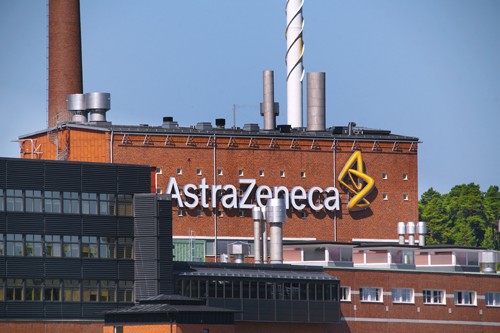
AstraZeneca’s two-drug chronic obstructive pulmonary disease (COPD) therapy Bevespi did not match up to a rival combination from GlaxoSmithKline (GSK) in a phase III trial.
The results of the AERISTO trial are a blow to AZ’s ambitions for Bevespi (glycopyrronium/formoterol fumarate) – a long-acting muscarinic agonist (LAMA)/long-acting beta agonist (LABA) combination that is one of the pillars of its new product roll-out in respiratory medicine.
Bevespi demonstrated non-inferiority to GSK’s Anoro (umeclidinium/vilanterol) on peak forced expiratory volume in one second (FEV1) but did not demonstrate superiority on peak FEV1 or non-inferiority on trough FEV1, missing two of the main endpoints of the study.
AZ’s head of respiratory medicines development, Colin Reisner, said that the result of AERISTO was “inconsistent with previous data” of Bevespi, adding that the company is delving into the data to try to find an explanation.
The 24-week trial pitted twice-daily Bevespi against once-daily Anoro – both given by inhalation – in more than 1,000 patients with COPD, a progressive disease that leads to airway obstruction and breathlessness. At stake is a share of a big and expanding market for COPD therapies, estimated at well over $15bn in the US and top five EU markets alone in 2016 but becoming increasingly crowded and competitive.
Anoro is one of the drugs GSK is hoping will help replace its COPD blockbuster Seretide/Advair (salmeterol/fluticasone propionate), which has lost patent protection and seen revenues slide in recent years as a consequence. The product grew 48% to £217m (around $280m) in the first six months of the year, and is starting to gather pace after a slow start since its approval five years ago.
Bevespi is a newer entrant, picking up its first OK in the US in 2016 and also approved in Canada, but still awaiting a green light in other markets including Europe and Japan. Sales are still tiny at just $13m in the first half of 2018.
The real battleground between the two companies is expected to be three-drug combinations for COPD, with an inhaled corticosteroid (ICS) added to the LAMA/LABA duo. Analysts predict these could outstrip current two-drug combinations with $1bn-plus sales potential within a few years of launch.
GSK’s Trelegy (umeclidinium/vilanterol/ fluticasone furoate) is already approved for marketing – picking up £37m in revenues in the first half of the year after getting US approval in September 2017 – while AZ’s PT010 (glycopyrronium/formoterol fumarate/budesonide) triple has phase III data in hand is up for regulatory filings in Asia this year and in the US and Europe in 2019.
Given that the AERISTO trial compared the LAMA/LABA backbones of GSK and AZ’s triple therapies, AZ will be hoping it can find a compelling explanation for Bevespi’s underperformance versus Anoro.




